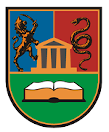Молимо вас користите овај идентификатор за цитирање или овај линк до ове ставке:
https://scidar.kg.ac.rs/handle/123456789/22661Пун извештај метаподатака
| Поље DC-а | Вредност | Језик |
|---|---|---|
| dc.contributor.author | Đurđević, Đorđe | - |
| dc.date.accessioned | 2025-11-04T11:17:38Z | - |
| dc.date.available | 2025-11-04T11:17:38Z | - |
| dc.date.issued | 2025 | - |
| dc.identifier.issn | 14508338 | en_US |
| dc.identifier.uri | https://scidar.kg.ac.rs/handle/123456789/22661 | - |
| dc.description | Istraživanje sprovedeno u radu finansiralo je Ministarstvo nauke, tehnološkog razvoja i inovacija Republike Srbije (Ugovor o prenosu sredstava za finansiranje naučnoistraživačkog rada istraživača na akreditovanim visokoškolskim ustanovama u 2025. godini broj: 451-03-136/2025-03/ 200198). | en_US |
| dc.description.abstract | This paper explores the genesis of the arboreal Marian motif, one of the dominant themes in Orthodox liturgical Theotokological hymnography, in which the Virgin Mary is directly or indirectly associated with the Edenic Tree of Life. However, as we aim to demonstrate in this study, the motif extends far beyond a hymnographic interpretation of the Tree of Life within a Christological-Mariological framework. Through this motif in church poetry dedicated to the Theotokos, an archetypal memory emerges of an ancient Hebrew, forgotten and rejected female deity ‒ so-called Asherah ‒ who held a central position in the early periods of Judaism and whose primary symbol was a tree. Thus, the central part of the paper offers an extensive review of relevant Old Testa- ment passages that refer to this deity, ranging from explicit references to the personal divine name ‒ thereby confirming Asherah’s existence as a deity ‒ to passages that mention a specially cultivated and pruned tree, a carved figure, staff, or statue ‒ the so-called asherah. From the theomorphic name Asherah, through a process of appel- lativization ‒ supported by periods of religious reform in which Mosaic Judaism, as we know it today, was crystallized, and in which Asherah became one of the main casualties ‒ there emerged the asherah as a common noun denoting a sacred tree/staff/pole/image/statue, which itself underwent iconoclastic cleansing during reform movements. Through the workings of the religious unconscious, the arboreal topos associated with Asherah re-emerges in the arboreal motif complex of liturgical Theotokological poetry. | en_US |
| dc.language.iso | sr | en_US |
| dc.publisher | Kragujevac: Univerzitet u Kragujevcu, Filološko-umetnički fakultet | en_US |
| dc.relation.ispartof | Lipar: list za književnost, umetnost i kulturu | en_US |
| dc.rights | CC0 1.0 Universal | * |
| dc.rights.uri | http://creativecommons.org/publicdomain/zero/1.0/ | * |
| dc.subject | Asherah | en_US |
| dc.subject | wooden image | en_US |
| dc.subject | sacred tree | en_US |
| dc.subject | Tree of Life | en_US |
| dc.subject | Old Testament | en_US |
| dc.subject | biblical literature | en_US |
| dc.title | ʼăšērȃ: BIBLIJSKIM TRAGOM ARBORALNOG MARIJANSKOG MOTIVA | en_US |
| dc.title.alternative | ʼăšērȃ: A BIBLICAL TRACE OF THE ARBOREAL MARIAN MOTIF | en_US |
| dc.type | article | en_US |
| dc.description.version | Published | en_US |
| dc.identifier.doi | 10.46793/LIPAR87.015DJ | en_US |
| dc.type.version | PublishedVersion | en_US |
| Налази се у колекцијама: | The Faculty of Philology and Arts, Kragujevac (FILUM) | |
Датотеке у овој ставци:
| Датотека | Опис | Величина | Формат | |
|---|---|---|---|---|
| Lipar 87 za sajt-15-38.pdf | 302.26 kB | Adobe PDF | Погледајте |
Ова ставка је заштићена лиценцом Креативне заједнице


